Castle Shalem Theory
The thesis statement of castle Shalem theory is this: Shalem will become, or perhaps already is to some degree, the castle from Phantom and Crimson Solitaire.
This theory hinges on three points: The imagery and implications around Shalem, the connection between the Crimson Troupe and the Castle of Dreams as real-life fairytales, and the specific traits of fairytale castles as they apply to the Crimson Troupe castle that make the connection plausible.
Shalem's strange situation
Shalem is the least verifiably real person in the entire operator roster. Unlike every other operator in the game, Shalem's operator files present information that a Rhodes HR employee would have absolutely no reasonable way of knowing. They describe Shalem's nightmares, the way the Troupe indoctrinated its performers, and Shalem's own backstory in detail, despite Shalem being characterised as highly secretive about his past. The files describe Shalem as a character in a story, rather than a person in a world the way all other operator files do.
A game character's profile describing a character to you won't read as strange on first pass, but no other operator's files do this. Fellow Crimson Troupe refugee Phantom, characters with deeply mystical backgrounds like the Sui, dreamland fairies Iris and Bena, and even the alternate timeline bad end Skadi the Corrupting Heart all have their files framed as something that Rhodes Island's Human Resources department would reasonably be able to discover and want to record about this operator. The rare bits with no plausible author are normally always confined to the promotion record. In Shalem's case however, only the parts up to the medical information seem to actually be written by Rhodes HR, while the rest appears to be written by the Crimson Troupe instead. The majority of the information we as players have about Shalem are things that the Crimson Troupe have said about him, and they explicitly have very little interest in giving an accurate portrayal of who Shalem actually is.
Shalem is also implicitly clairvoyant. He has multiple lines where he refers to seeing or envisioning the future, and he knows things that he has no reasonable way of knowing. This isn't something the Crimson Troupe's actors can do in general, Phantom shows no indication of similar future sight beyond maybe the puppet he gives you in the Trapped Man encounter. It's Shalem in particular who has a somewhat looser connection to chronology than others.







Shalem's files open up by saying he was in your life before you even realized, and you trust him, like a command for this to happen rather than a description of what happened. He came out of nowhere, and his history is unverified according to actual HR and only told through the unreliable narrator that decided what kind of "character" he would be. Functonally, Shalem does not exist outside the context of the Crimson Troupe. He did not exist until "the story" needed him to.
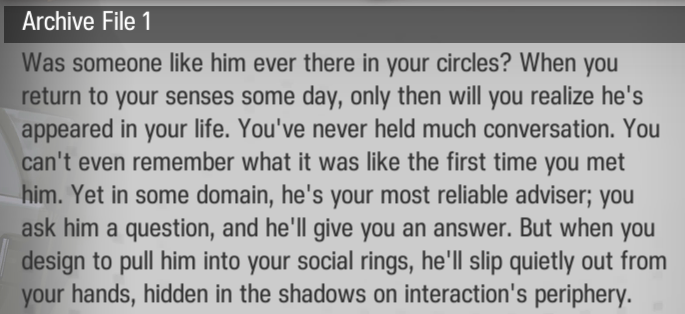

Shalem is so deeply entwined with the Crimson Troupe that nearly all the information we as players have about him is filtered through what the Troupe has to say about him, and everything else has to be gleaned from the moments where the Troupe's account of him doesn't line up with his actual behaviour. For example, although his files claim he disappeared from public view after Phantom arrived at Rhodes Island, Shalem is actually shown walking around and chatting up Mint in Rewinding Breeze, which is set shortly before the events of IS2. However, the nightmare in his operator record acknowledges this difference in behaviour too, casting doubt again on how much of anything Shalem does is his own will and how much of it is the inevitable fate the Troupe planned for him.
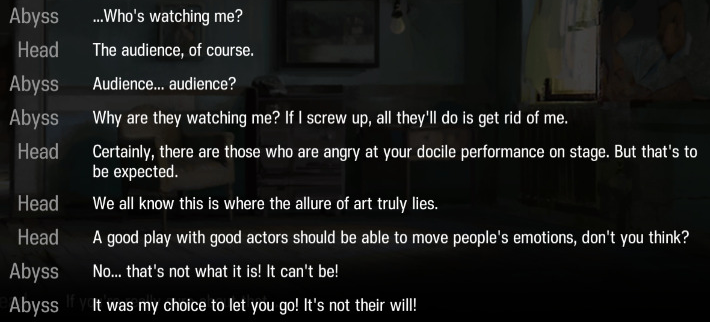
Although the troupe repeatedly claims that Shalem has no talent and they don't want him back, both his files and his nightmares involve the troupe urging him to go back on stage. Shalem himself, despite outwardly trying desperately to escape the Troupe's influence over him, also subconsciously seems to still hold a desire to prove himself as an actor. His New Year's line is ominous, and implies he expects to indeed lose himself to the arts eventually.

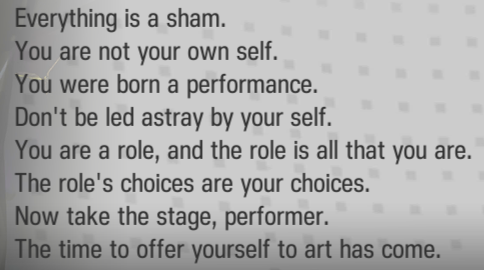




Shalem's skin is called "The Fruition". Its flavour text is unavailable to view in game, like with many skins, but can be found in the game files.
"The curtains fall, as do ripened fruits. If you wish to taste the fruit, learn to create. They are best fallen, as they have elsewhere, as yours do."
This skin also has the words "Flower of Evil". Notably, Shalem is almost always wearing or carrying flowers in some way, even in unofficial drawings his artist Cenm0 posted on Weibo. His default jacket has a flower pattern on the lining, and in his skin the flowers are growing directly onto his body. In one particularly ominous design Cenm0 did, the diamond accessories on Shalem's head appear to have sprouted.

All of this serves to frame Shalem as someone with some kind of future potential or purpose that he has yet to meet, which will consume him in some way, and of which he has some degree of awareness. He is the flower of evil that has yet to sprout, the fruit that has yet to ripen and fall. This imagery of waiting for a seed to bloom is also used by the Playwright when he explains his plans for Rhodes Island to the Troupe Master.

One final detail that casts doubt on how real of a person Shalem even is, is that his tail is translucent at the tip. This is consistently the case across his base artwork, promotion artwork, and skin, so it's safe to assume this is an intentional design choice.
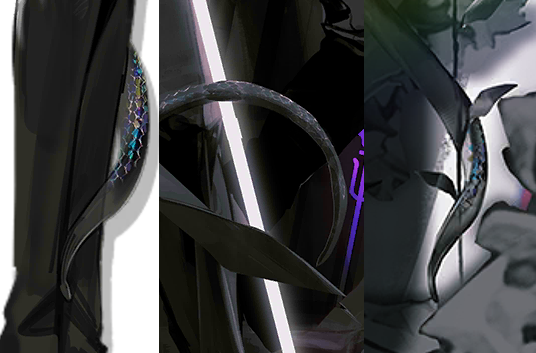
Put it all together, and Shalem appears to be more of a construct than a real person. This is the very reason for his constant existential nightmare, the fear that he does not exist outside the confines of the Crimson Troupe's story. There is something he was made, created, to do, and he doesn't want to do it, but he doesn't seem to have much choice in the matter.
The Crimson Troupe as fairytale
In Arknights, fairytales are real. Iris and Bena explicitly say this multiple times across their stories. Both of them repeatedly express strong disdain for liars, so they wouldn't lie about this, and more importantly, they have the fairy dreamland powers to back up their claim. The Castle of Dreams is a real building in a real location. The service it provides of safekeeping childrens' treasures and returning them at a scheduled time years or even decades later, and corresponding magic to prevent these items from being affected by the progression of time, are equally real. Children can really visit the castle in their dreams, they can really make contracts with the fairies from the Castle of Dreams to store their items, and those items will really be returned.

Shalem claims that the Crimson Troupe is something similar to the Castle of Dreams, although the Crimson Troupe is much more sinister. While there's no evidence of the Crimson Troupe being known as a fairy tale rather than just a rumor, fairy tales are real in this world, so entities that operate on fairy tale rules without also being known as fairy tales can reasonably exist.

The conversation is prompted by Iris finding a ticket stub for a Crimson Troupe performance hidden in a book in the Castle of Dreams, and she speculates that either her grandmother or another denizen of the castle left it there. The most likely candidate is indeed her grandmother, because said grandmother appears as the Curio Keeper in IS2. We can safely assume the Curio Keeper is supposed to Iris' grandmother: she has the same blue flower accessory in her hair as Iris, and mentions having a Caprinae granddaughter (Bena) as well. Despite the castle's hostile nightmare environment, the Curio Keeper is calmly reading fairy tales as if she belongs here. The Castle of Dreams and the Crimson Troupe are undeniably connected through her presence.

Iris in this conversation seems to have vaguely heard of the Crimson Troupe before, but isn't aware of any of the details. It is very likely that Iris does not understand the full implications of the Castle of Dreams being similar to or connected to the Crimson Troupe. According to her profile, she only knows the sanitised versions of the fairytales that she represents. Her vignette in Beyond Here and her operator record both show that she's not naive about the kind of harm and malice that can befall people in reality, but as far as she knows, fairytales are solely gentle, positive things.

Considering the Curio Keeper's presence in the Crimson Troupe's castle, and Iris' ignorance of the more unsavoury Victorian fairytales, it's not impossible that the Castle of Dreams and the Crimson Troupe's castle are actually the very same castle without Iris' knowledge, or that the Castle of Dreams fairytale is essentially the sanitised version of the Crimson Troupe fairytale. Either way, between Shalem's words and the Curio Keeper's presence, it's safe to conclude that the Crimson Troupe's castle operates within the realm of Victoria's darker fairytales, and that consequently, Shalem is subject to fairytale rules as well.
The nature of the fairytale castle
Fairytale castles can take different forms. Iris talks in her module about how her first encounter with the Castle of Dreams was in the form of a pop-up book, which became the first thing to be stored in the Castle of Dreams. Although the book and the castle are obviously not the same physical object, Iris still refers to the book as being "the castle itself," suggesting fairytale castles can both change form and inhibit multiple forms at once. The Dreambind Castle Model collectible also implies castles can change form.


One of the possible forms of a fairytale castle is that of a person. Iris refers to someone as "his own castle" in her module in a way that is clearly metaphorical, but Bena's module tells a fairytale about a boy who lives in a castle that takes on the form of a person so that it can follow him around. The story in Bena's module is of course a fairytale allegory, but fairytales are real, and so are fairytale castles. Also, this fairytale is noted to be from the same collection of fairytales that the Curio Keeper is reading (English Arknights tends to be inconsistent in the spelling of obscure details like this, Jeffrey and Geoffrey are both written as 乔弗瑞 in the Chinese script).

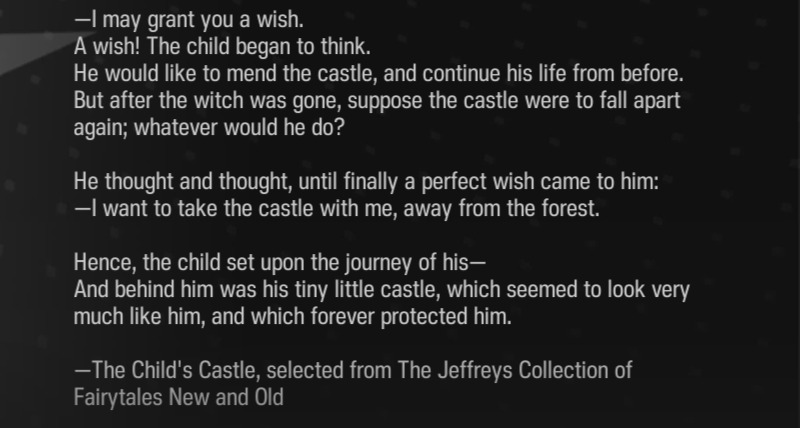

Castles can be people, and the Crimson Troupe castle is heavily implied to be sentient. Descriptions hidden in the furniture set and the medal set present the castle as something with its own awareness and will. The castle sees everything of you, and it doesn't want its nature revealed.


This is curiously similar to something Shalem's nightmares say about him in his operator record, namely that he doesn't like being seen because he fears he has no self that can be observed. I believe the specific phrasing that it does not exist here is significant, because as far as a dictionary can tell me, this is specified in the Chinese script as well. If his 'true self' does not exist in this particular location, it could mean his 'true nature' is something that exists separate from this particular body that is labelled 'Shalem.'

The Castle of Dreams and the Crimson Troupe's castle both explicitly operate outside linear time, making this another trait associated with fairytale castles. The Castle of Dreams preserves items for decades unchanged, with cupboards that can "lock away time itself" as Iris puts it. Chronology is explicitly wonky within the Crimson Troupe's castle, with its story told backwards across its endings and its deepest floor being outside time altogether.


As mentioned earlier, Shalem's clairvoyance is something that appears to be unique to him as far as the Crimson Troupe's performers go. His operator record is also structured as a kind of timeloop, further portraying him as separate from linear chronology.
Of particular note here is that IS2 features multiple cases of people existing in two points of time at once. The Trapped Man encounter shows Lucian cowering under a table while the Blood Diamond is walking around, and he gives you a puppet of his Rhodes Island Operator self. The Ursus man who was turned into Big Sad Lock after his suicide can be encountered in the moment before his suicide, after the bear was already made.

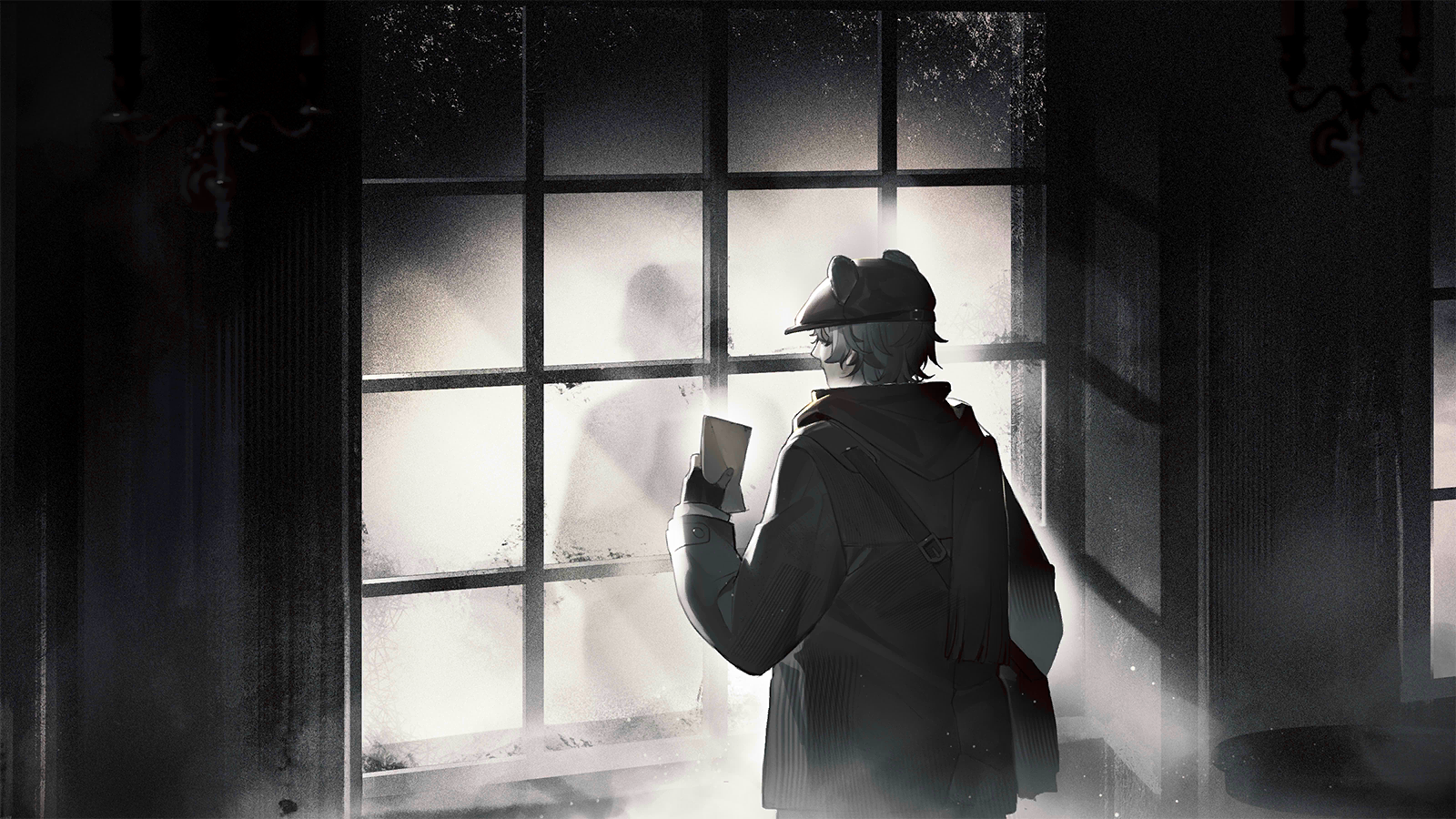
Big Sad Lock proves that the Crimson Troupe has the means to bind someone's soul to an inanimate object in order to animate it. On top of that, there is such a thing as a "Castle's Offspring," a box that can grow into a stage. A "stage" and a "castle," as understood in the context of the Crimson Troupe, are things that can grow and propagate.
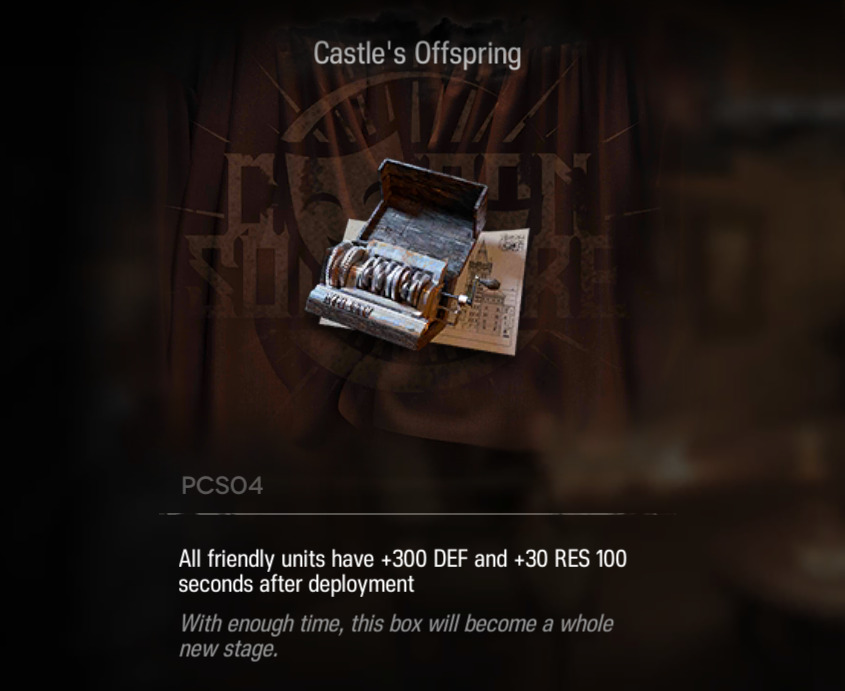
Finally, the soundtrack for the 6th floor of the Crimson Troupe castle is called "silent abyss". This is written in Chinese as 宁静之渊, with the same character for abyss (渊) as Shalem's old codename (沉渊).
So what does it mean
This wasn't a genuine theory at first, just some ideas bounced back and forth between me and a friend who is into sentient buildings. Shalem's yet-unfulfilled potential is set up pretty clearly, but the exact shape that will take is largely up in the air. My angle here initially was Shalem giving up on getting to ever escape the stage, and instead turning to the other extreme and reasoning that if leaving the stage is impossible, then becoming the stage is a different way to not be beholden to it. A bird that becomes its cage is free in the sense that it gets to decide when the door is open, that kind of thing. It was a largely vibes-based concept rooted in the kind of imagery I just personally happen to enjoy, with no expectation of that actually being the plan on Hypergryph's side.
Then I unlocked Iris and Bena's modules, which made me think this could straight up actually be the plan, because "castles can be people" is such an insanely specific thing to bring up TWICE.
Sentient places and concepts aren't unheard of or even all that uncommon in Arknights. There's Feranmuts representing the land, there's the seaborn hivemind of the ocean, there's Samivilinn in the north, there's originum and the Civilight Eterna, and there is of course the Crimson Troupe's castle and their crazy puppet shit. In IS3 ending 4, Mizuki purposely becomes the ocean himself. That alone wasn't enough to make me suspect the Crimson Troupe castle to be a person too, let alone this person being Shalem, but the Castle of Dreams girlies both bringing up castles as people makes it feel a lot more likely.
Shalem's personhood is just incredibly dubious in general. Between the crazy puppet shit in the castle, Shalem and Phantom both self-describing as puppets at separate points, Bena's own weird soul puppet Annie, and Iris' insistence that puppets and toys and dolls can naturally be people, I do believe it would make sense for Shalem to turn out to be some kind of artificial creation, if not specifically the castle itself. Either works for me, and if it's never clarified that's fine with me too, because the ambiguity is it's own enjoyable flavour.


Ultimately this is just speculation, and I won't really be upset if it turns out to be wrong, because I actually never expected it to be this plausible to begin with. At the time of writing the Chinese server has just announced a Crimson Troupe comic and event that have not yet happened, so I'm actually kinda rushing to get the whole site online before those happen, just in case I get to somehow be right. I'll consider it a victory if I get to add one or two more items to this list.








